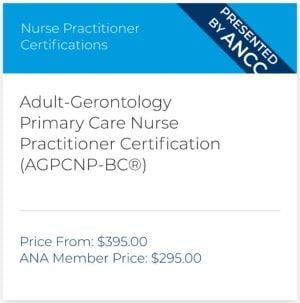Boardrooms Need Nurses At The Table
4 min
Kate Judge, the former Executive Director of the American Nurses Foundation, tells how organizations from Fortune 100 companies to local YMCAs work better when nurses help guide them from within the boardroom.
What Nurses Bring to the Table
Budget Cuts. The two most dreaded words an organization can face had gone from maybe to mandate at a large hospital in the Midwest. One item being considered by the board of directors: shutting the pharmacy overnight on weekends.
While most of the board saw cost savings, one member saw something different. Take away full weekend pharmacy service, said the lone nurse on the board, and you not only increase the burden on clinical staff, but you diminish patient care. Because of her unique professional perspective, she was able to convince the other members that reducing pharmacy hours was a move the hospital couldn’t afford to make.
This is just one of many examples I’ve heard—including from CEOs—about how boards function better and move the needle forward for the communities they serve when nurses are part of the policy conversations.
And it’s not just hospital boards that benefit from nurses’ service.
What nurses know about people and systems can be invaluable to boards at schools, shelters, camps, companies, libraries, philanthropies—indeed, any nonprofit or for-profit organization governed by a group of individuals charged with its strategic and fiscal success. Nurses’ talent for making an environment safer, healthier, and more person-centered, and their direct experience with system thinking, communication, and dealing with ambiguity, translates universally to board governance and can be leveraged at local, state, national, and international levels.
Yet even in hospitals, nurses hold just 5 percent of board seats. Fewer serve on corporate boards. As one of the only nurses guiding a Fortune 100 board, Comcast board member Madeline Bell, CEO of Children’s Hospital in Philadelphia, is the torch bearer.
In recognition of this untapped potential, the American Nurses Foundation helped create a national movement, the Nurses on Boards Coalition (NOBC), to encourage nurses to volunteer for board service. According to NOBC, “all boards would benefit from the unique perspective of nurses to achieve the goals of improved health and efficient and effective health care systems at the local, state, and national levels”.

High Return on Investment
Serving on a board doesn’t mean you have to aspire to management or leadership. It’s a way to make a difference for something you care about. Board service can yield tremendous intangible benefits for anyone. These include:
- An outlet for working on something else you’re passionate about
- A renewed sense of pride and personal satisfaction that comes from learning new skills such as leadership and fundraising, and from growing as an individual
- Increased happiness and health that comes from feeling like you’re making a difference (lots of research proves this!).
Knocking on the Boardroom Door
Tens of millions of people sit on boards of every kind. Here’s how to join one.
Start with your passion. What do you care about? What charities do you support?
Assess your skills, but don’t obsess
It’s common to think we need to have all the skills and training for board service at the outset, but you can learn on the job. I did. Madeline Bell didn’t have entertainment industry knowledge when she joined the Comcast board. What matters is, can you work in a group? Help a group work better together? Look beyond your knowledge or perspective when searching for a solution? Nurses tend to be good at looking at issues holistically, which is invaluable.
Prepare to stretch
Financially, that is. It’s a myth that you must be rich to be on a board. Boards need people who are committed, intelligent, and focused on the best outcome for those the organization serves. However, while you don’t have to write the biggest check in the room, you can’t expect someone else to donate if you don’t give anything.
Finally, Self-Activate
Begin with the most productive step—networking with your friends and family. Google the organizations you care about to see who is on their board and if anyone you know can connect you. Search online for board openings at top organizations and employers near you. Home in on ones working on a cause you’re passionate about. Find additional resources from the American Nurses Foundation here.
I’ve never met a nurse who served on a board and wasn’t happy to have had the experience. In fact, many nurses serve on more than one board when they get into their element. The world needs what nurses have, and boards stand ready to welcome them to the table.


